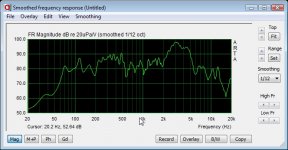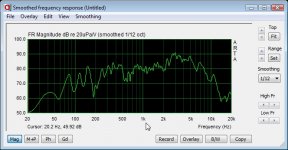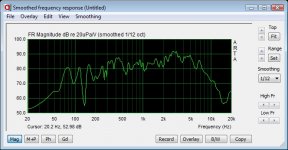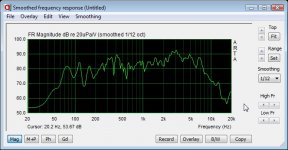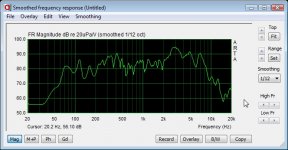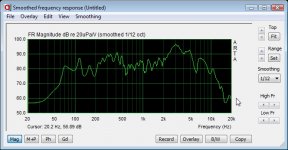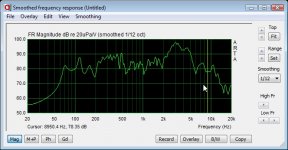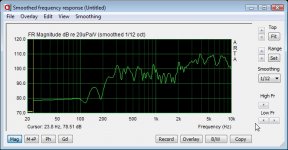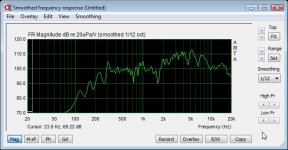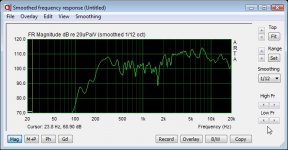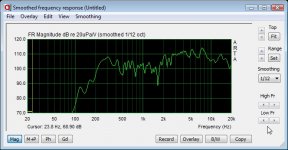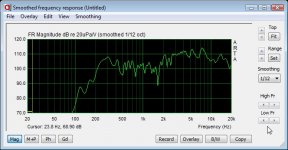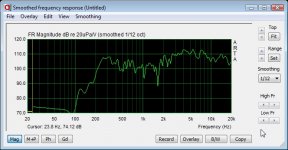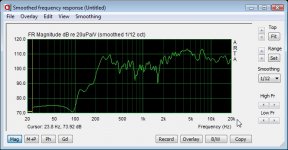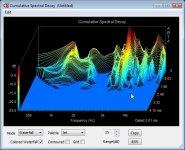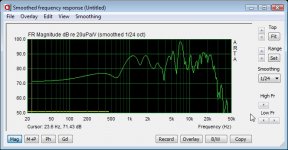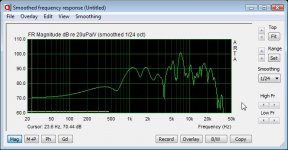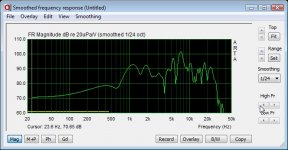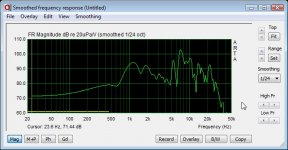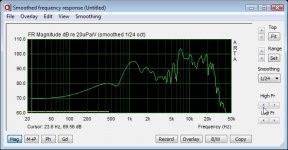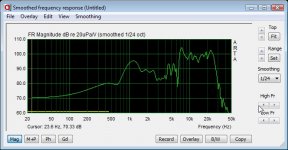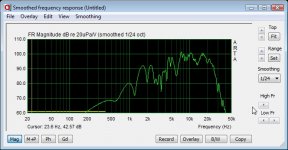Hello all!
I want to try a new diaphragm type for fullrange drivers and and don't want to care much about the rest. As far as I understand it Lowther basis would be convenient because spider and surround are constructed for easy replacement. Easy only for professionals, or also for diyers? And is there a cheaper solution?
Oliver
I want to try a new diaphragm type for fullrange drivers and and don't want to care much about the rest. As far as I understand it Lowther basis would be convenient because spider and surround are constructed for easy replacement. Easy only for professionals, or also for diyers? And is there a cheaper solution?
Oliver
Hi el'Ol, Try to take a look at this thread, you have to go a bit back in the thread. Hope this helps.
Take care
http://www.diyaudio.com/forums/multi-way/212953-project-ryu-diy-field-coil-loudspeaker.html
Take care
http://www.diyaudio.com/forums/multi-way/212953-project-ryu-diy-field-coil-loudspeaker.html
Depends on exactly what you're doing. If you want quality performance, then the cone of the drive unit: the physical profile, mass, stiffness, micro-resonant behaviour & self-damping properties should be inherently linked to the suspension and motor design. Just slapping any old thing onto an existing unit (not suggesting that's what you're doing) isn't likely to bring good results, or provide much data worth having.
Thanks!
Maybe I should cooperate whith the field coil guys to see what mechanical damping of the suspension and what driving force harmonizes best with the diaphragm. Also I'm not sure how easy is it to source the materials as a DIYer, maybe some help concerning this would also be helpful.
Maybe I should cooperate whith the field coil guys to see what mechanical damping of the suspension and what driving force harmonizes best with the diaphragm. Also I'm not sure how easy is it to source the materials as a DIYer, maybe some help concerning this would also be helpful.
Here are the plots from 0 to 90° (driver in open baffle). Sorry for not knowing how to integrate them in ARTA.
Before I upload pictures I first figure out whether there is a demand for something like that in the architectural installation market. But this is probably a field where it is much harder to earn money than in exotic hifi.
Before I upload pictures I first figure out whether there is a demand for something like that in the architectural installation market. But this is probably a field where it is much harder to earn money than in exotic hifi.
Attachments
Removed the main diaphragm, leaving only what I thought would be the tweeter section. Result: The aggressive pro sound is gone, speech intelligibility is far better, and the bump differs less between on axis and off-axis. Now I'll design a notch and listen again. The big Lowther voice coil gives clean sound at levels one would never expect from a micro-fullrange driver. Seems that I am in the center of the mass market now. Bad for a nobody.
Here are the measurements of the current version:
Sadly the sound is very much on the aggressive side again. Meanwhile I tested the BMR, a fullrange driver developed by NXT that is also developed for ultra-wide dispersion. I would describe its sound character as the other extreme, kind of an easy-listening driver.
Sadly the sound is very much on the aggressive side again. Meanwhile I tested the BMR, a fullrange driver developed by NXT that is also developed for ultra-wide dispersion. I would describe its sound character as the other extreme, kind of an easy-listening driver.
Attachments
Mic distance is < 1 m.
I didn't like the massive smoothing of gated measurements (no idea whether this problem can be fixed, I'm no ARTA expert), so I posted ungated measurements.
Meanwhile I also amputated what was originally considered the tweeter diaphragm, leaving only what was originally considered the connecting element. The arrangement has no similarity with anything that is currently considered a sound transducer, but I like it best that way.
And yes, these are 15° steps.
I didn't like the massive smoothing of gated measurements (no idea whether this problem can be fixed, I'm no ARTA expert), so I posted ungated measurements.
Meanwhile I also amputated what was originally considered the tweeter diaphragm, leaving only what was originally considered the connecting element. The arrangement has no similarity with anything that is currently considered a sound transducer, but I like it best that way.
And yes, these are 15° steps.
Last edited:
Thanks. The graphs for 30°, 45° and 60° are exactly the same?
You would need to look at free field measurements to separate driver/enclosure effects from room effects. Gated measurements will help with that. Yes, it does reduce frequency resolution but so does 1/12 octave smoothing you used in the graphs above.
You would need to look at free field measurements to separate driver/enclosure effects from room effects. Gated measurements will help with that. Yes, it does reduce frequency resolution but so does 1/12 octave smoothing you used in the graphs above.
Gated responses of the "naked" version 0-75°, nearfield-CSD
I'm going to couple it to a very soft-sounding bass diaphragm, since coupling it to something hard always sounded untolerably harsh.
Any affordable driver that goes in the Spendor/Harbeth direction? I find Polypropylen quite muddy, and glueing it is not easy.
I'm going to couple it to a very soft-sounding bass diaphragm, since coupling it to something hard always sounded untolerably harsh.
Any affordable driver that goes in the Spendor/Harbeth direction? I find Polypropylen quite muddy, and glueing it is not easy.
Attachments
- Status
- This old topic is closed. If you want to reopen this topic, contact a moderator using the "Report Post" button.
- Home
- Loudspeakers
- Full Range
- building one's own diaphragm
